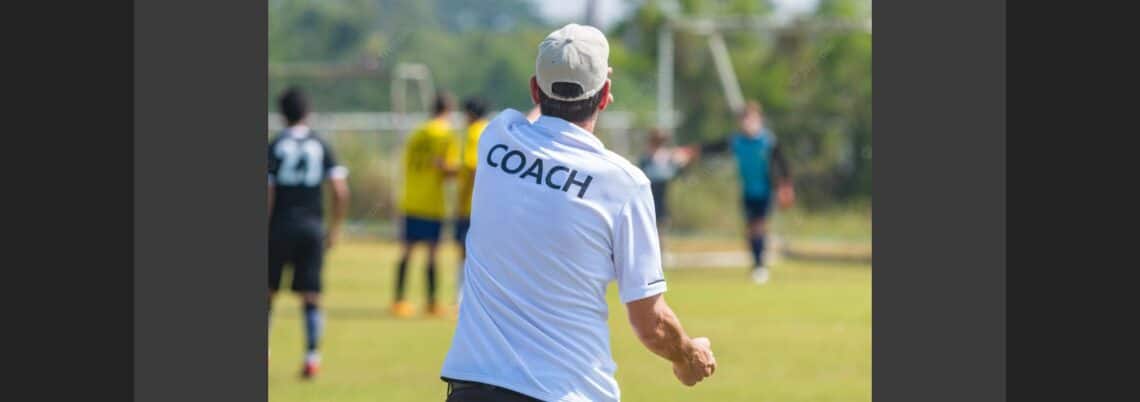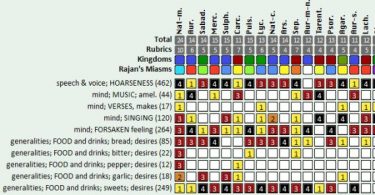The first time I saw Dr Paul Herscu present his idea of analysis by Cycles and Segments nearly 20 years ago, I must confess to being somewhat perplexed. Why do we need to look at a case in this way? Why do we need to group symptoms together? When faced with something new, our first thought is to question it (rightly so), then to either dismiss it or embrace it. Sometimes we dismiss a new idea without understanding it. Homeopaths know all too well this approach. I liken this to a sports person learning a new skill. The coach will encourage the player to work at a new technique that will enhance his game. The player will resist at first.. “Why do I need to do this? I’m doing alright as I am”. When the coach sees a weakness in the player’s game he will encourage the player to improve his skills by doing a certain maneuver or changing a certain aspect of his game, looking at doing things in a different way to improve his game. The player will then work on his weakness until he has mastered the skill and improved his game.
I was the player who dismissed the new technique. In fact, I didn’t see Paul again for another 5 years. I plodded on in my practice, getting fairly good results but also getting frustrated at times when I couldn’t seem to help my patients. Even taking into account obstacles to cure, there were some cases that I felt should have been helped better. Then I saw Paul again at a seminar in London. There he was once again explaining how the Cycles and Segments approach had helped him tremendously in his practice. This time I listened to the Coach!
He talked about Stress and Strain. How the person receives a stress and how the person strains against that stress. The straining process being the symptoms that are produced. How certain individuals are predisposed to certain stresses and that we all strain in a different way depending on our susceptibility and predisposition.
When we give a remedy, the remedy is a highly specific stress on the individual which creates healing. He explained how a case could be divided up into segments. Each segment containing rubrics that mean the same thing. This way you will not lose the remedy, especially if you use too small a rubric. It’s probably best to give you an example at this point from a live case taken by Paul Herscu at a recent seminar the YCCH organized here in Yorkshire
Segment 1.
Chronic inflammation of the throat
Inflammation of the skin
Easily becomes irritable
Bladder infection
These symptoms all mean the same thing : INFLAMMATION
Segment 2.
Excessive perspiration
Chronic diarrhea
Easy temper
Yelling, throwing things
These symptoms all mean the same thing : DISCHARGES
For the sake of brevity I have not included all the segments here in this article but basically we then go on to find more symptoms that mean the same thing and create more segments that eventually form a CYCLE of disease. We can then find a remedy that most closely matches the patient’s cycle, or in other words the patient’s totality.
Another aspect of Paul Herscu’s work that has not only inspired me but has helped me tremendously in my practice is his ‘hierarchy of remedies’. Basically he says that remedies can be categorized into a hierarchy, not dissimilar to how Hering’s law of cure works, but in terms of remedies. There are four phases and each phase represents a deeper state of pathology progressing from left to right. Polychrest remedies in phase one, Nosodes in phase two, more intense remedies in phase three. The fourth phase becoming even more intense with deep acting remedies such as Aurum, Veratrum, and Mercurius
The YCCH have organized several Herscu seminars over the past few years and we continue to do so, introducing many homeopaths to his system of analysis through cycles and segments. On our three year professional training course we teach other systems of analysis in order to give our students a broad foundation, but we love following the cycles and segment approach. We have found over the years that our students very quickly embrace this method, as it is a truly holistic way of understanding the patient.





Dear Mrs. Robinson,
may I please be allowed to kindly ask for a further elaboration of the following aspect in your article: the Yorkshire College of Classical Homeopathy teaches Homeopathy acc. to the following principles (taken from your website):
The Why choose Classical Homoeopathy?
Homoeopaths who practice according to the principles of homoeopathy as set down by the founder of homoeopathy, Dr Samuel Hahnemann in his Organon of medicine use the prefix ‘Classical’ to differentiate themselves from practitioners who prescribe homoeopathic remedies outside of these principles.
Those main principles are:
•The single remedy
•The minimum dose
•The law of similars
•The vital principle
•The totality of symptoms
•The proving of remedies on healthy individuals
•The potentisation of remedies
Has it been realized that the selection of remedies as suggested by Dr. Paul Herscu (acc. to a hierarchy of remedies) as quoted in the following sentence simply abandons the law of similars und therefore any homeopathy (not merely classical homeopathy) homeopathy?
“There are four phases and each phase represents a deeper state of pathology progressing from left to right. Polychrest remedies in phase one, Nosodes in phase two, more intense remedies in phase three. The fourth phase becoming even more intense with deep acting remedies such as Aurum, Veratrum, and Mercurius”
Otherwise being asked in different words: “When did Dr. Hahnemann teach and practice selecting remedies NOT according to the law of similars BUT according to a hierarchy of remedies?”
Thank you very much for your kind attention.
Siegfried Letzel
Dear Siegfried
Dr Paul Herscu’s system allows you to adhere to the law of similars more consistently. I think the best thing for you to do, is to go to his web site nesh.com where he explains this in more detail.Many thanks for your interest.
Monica Robinson
If you go to Homeopathic articles, Dr Amy Rothenberg (his wife) has a case of Autism in which she explains the map of Hierarchy very well.
I think this is the article:
http://www.nesh.com/articles-on-homeopathy/map-of-hierarchy-case-of-autism-amy-rothenberg/
Thank you Manish
Thank you very much for providing the links, Monica and Manish. But if you read the article, isn’t it rather supporting my restrictive thoughts? Again, the focus is the law of similars. And if we really take reference by Dr. Hahnemann as is done in the article, we just face another school creating its own laws in the name of homeopathy. Please forgive me for saying so, but we have all the references given by the founder of homeopathy.
No Siegfried it does not support your restrictive thoughts. Paul teaches 100% from the Organon 6th Edition as we do but recognises that over time Hahnemann would have moved on, refining and expanding his knowledge, always adhering to the principles of Homeopathy which are the basic building blocks.
The hierarchy is simply another tool in finding the similimum. Paul recognised that many of the polycrest remedies (phase 1) were indicated in a particular case but did not match the totality. By using the cycles & segments approach he was able to see remedies coming up in the cycle, that covered a deeper more intense pathology that matched the case before him. Only when the totality of the case before him, matched the remedy picture did he prescribe. He would see that underneath the picture of the, lets say phase 3 remedy , he would also see segments of the polychrest or nosode remedy, but not the whole cycle. When the picture changed and the patient no longer needed the phase 3 remedy, he would often see the totality of the polycrest or nosode, that came up in the case but not in it’s entirety.
We are definitely NOT another school creating it’s own laws but we recognise that Hahnemann would not have stood still with his experiments. At the start of the Organon 6th edition, he stated ” this is my nearly perfect cure”. He recognised that more could evolve from his teachings, always making certain that the basic principles were adhered to.
Thank you, Monica, for your kind and elaborate reply. At this point of our exchange I’d like to underline the fact that I don’t intend to criticize or evaluate any teachings or practice done by Dr. Herscu, his wife and you. Neither do I doubt the experience of your team.
But pushing this system under the umbrella of ‘classical’ homeopathy certainly is a matter of serious evaluation.
There is a good number of different schools in classical homeopathy justifying their position with such statements as ‘Hahnemann would not have stood still with his experiments’, ‘that he would have moved on, refining and expanding his knowledge’. Certainly this is right.
BUT, if we really accept Dr. Hahnemann’s modality as Homeopathy and the basis of our practice, then we need to follow his demand to ‘reproduce it, but to reproduce it exactly!’
And here we go:
Narrowing down remedies acc. to the above system is a fact which strongly violates homeopathic principles. In this comment-area, it may not be the right place to get deeper into this, but if we read Hahnemann, Lippe, Boenninghausen and Hering, all of them urgently warned us to organize remedies in such fashions or to reduce them acc. to certain properties (like remedy A is depressed, remedy B is anxious, remedy A is for more superficial pathology, remedy B is for deeper pathology…). We should know that.
Imagine that all those different classical homeopathic schools will have a next generations which will be followed by the next to the next one. And all these new generations will ‘move on’ with the philosophy of their respective school. Homeopathy will drown further as it does today. I do not wonder why Health Care Systems tend to erase homeopathy. There doesn’t exist HOMEOPATHY today but a mishmash of all sorts of schools claiming to be homeopathic, but there you hardly will find a homeopath who ‘reproduces homeopathy’ — who exactly reproduces homeopathy.
So please, and this is my urgent and only plea: Teach and practice everything what you find reasonable, successful, reproduceable and according to your experience. But, PLEASE, leave homeopathy homeopathic and sell any other ‘addition’ as such, for example as the Dr. Paul Herscu Method.
I hope that you understand that I didn’t approach you because of any dislike, aversion or opposition. In the contrary, I am really very grateful that you share your knowledge with us in your essay and I wish you best of luck now and in the future, the best cures possible. But maybe one day, NESH will use the term Homeopathy, even Classical Homeopathy respectfully and exclusively within its true context, which is unvariably defined and limited.
I guess, everything is said so far and you may want to have the last word.
Respectfully yours and with all best wishes to you, Dr. Herscu and Dr. Rothenberg,
Siegfried Letzel
All schools formed on the premise that Hahnemann, if resurrected from the dead, would have changed his thoughts in a certain way are and will remain a departure from Homeopathy.
I’m sorry Surabhi, I have to totally disagree with you. Hahnemann continually revised his thoughts and concepts, this is why he moved on from Organon 1 to Organon 6. Manish states this too in his article https://hpathy.com/organon-philosophy/organon-of-medicine-history-development https://hpathy.com/organon-philosophy/organon-of-medicine-history-development/ . Always he stuck to the basic principles, the foundations, which will and always will remain unchanged, but he didn’t stop at refining his methods to achieve ” the almost perfect cure”. As Manish states ” He was a born searcher for truth and was always ready to modify his ideas to suit the facts. He had no hesitation in acknowledging his errors , if fact and experience went against his principles.”
Seigfried , Dr Herscu’s system is not a method (a means or manner of procedure, technique or way of doing something). It is a Model ( a simplified description of a system or process, to assist calculations and predictions). So Dr Herscu’s model of cycles and segments is just that, a MODEL to assist the Homeopath during analysis of the case, to find the similimum, taking into account the complete totality, whilst at all times adhering to the fundamental principles of Classical Homeopathy.
Ok, let’s take it the hard way. What did he change? The Law of Similars is NOT changed, the process of Selection of Medicines is NEVER changed.
All that he introduced was MIASM theory (remedy selection still remained on SYMPTOM SIMILITUDE and nothing was added there) and better ways to administer remedies (DRY to WET / INHALATION to LMs).
What Hersu has done is to change the method of selecting the remedy …. and this is precisely why he is wrong and practising something other than Homeopathy.
If you read and research Dr Herscu’s model, you will find that the selection of the remedy is based on the complete totality of symptoms and the law of similars. He hasn’t changed anything only enhanced the selection. If you read Amy’s case, highlighted earlier in this discussion, she has a perfect example of this.